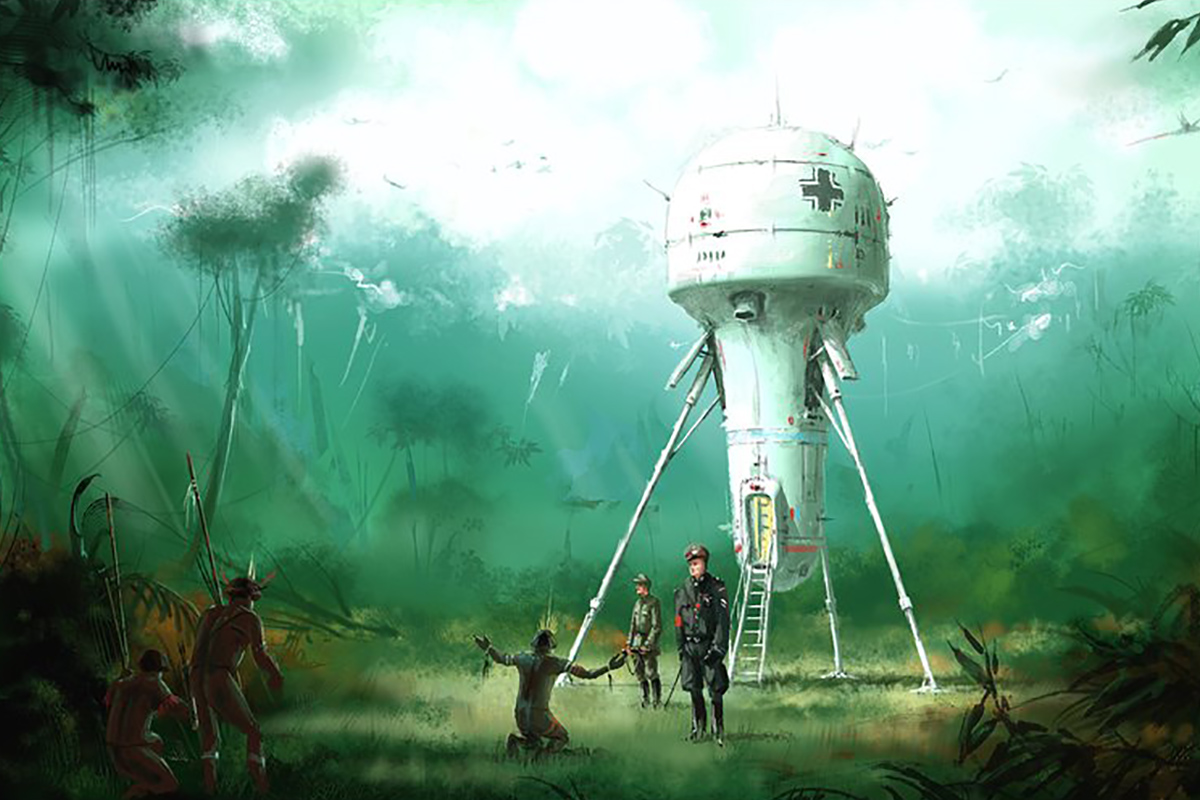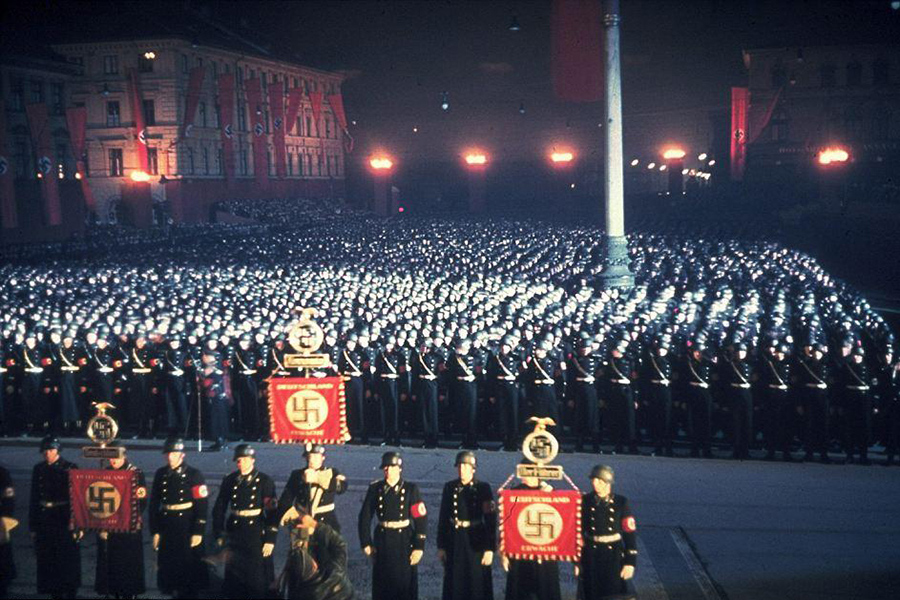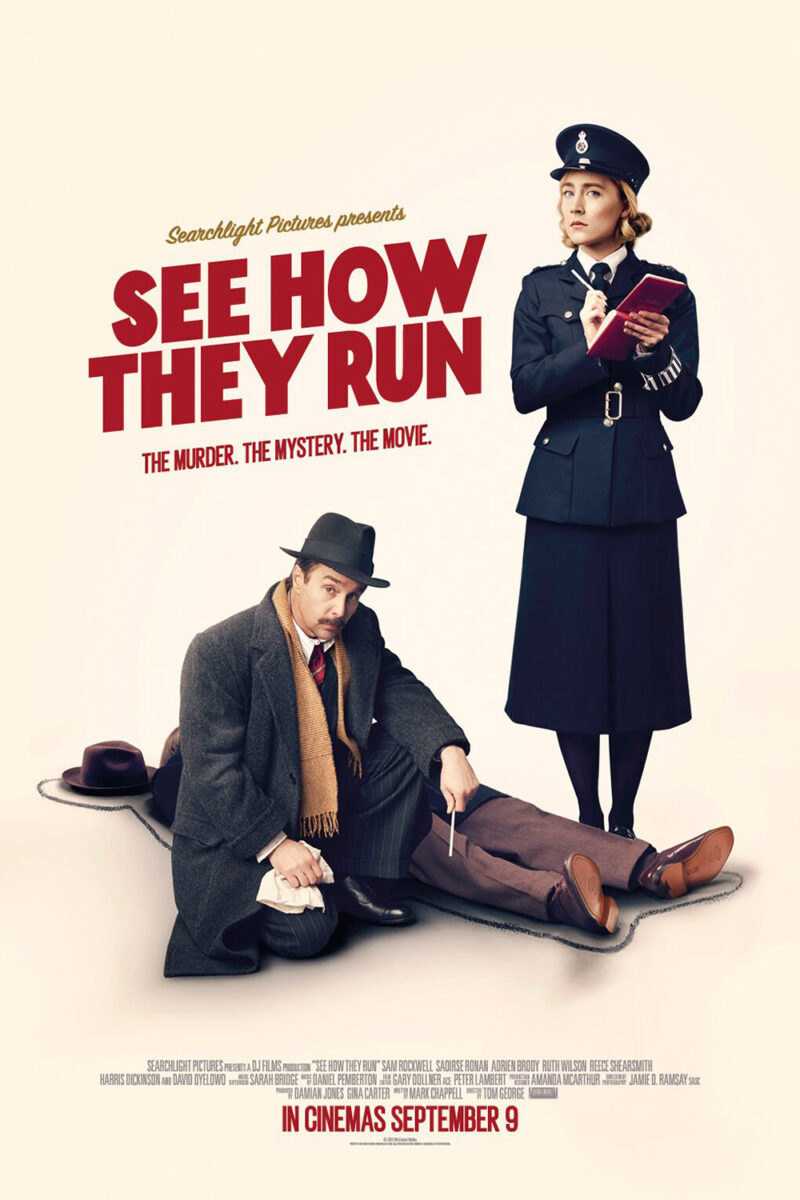The Space Race is a fascinating time; it’s one of superpower competition and cutting-edge technology that ended up transforming the world by way of escaping its gravitational pull. Reading about it, and the big personalities that drove it, feels almost like standing there in that crowd in Cape Canaveral, sensing the quaking ground brought on by blazing rocket fuel.
World War II, as us alternate historians know very well, is also a fascinating time. It’s perhaps the purest good-versus-evil in the history of the twentieth century, with heroes and villains that seem out of an ancient epic poem. It was also a time of great technological change, when the dream of flight gave birth to the nightmares of Dresden and Coventry and Tokyo. It was a war of tanks and bombers, of rubber and steel. It was a war where a lab in New Mexico led to entire cities being destroyed in moments.
Given their proximity to one another, it feels almost obvious that one could combine the two. That’s exactly what Allen Steele has done in his novel V-S Day.
The point of divergence is that the Nazis invest significant research into a spaceborne bomber, designed to orbit the Earth and bomb America. French spies and British intelligence find out about this, and send it across the Atlantic. The plot follows an American research team as they try to build their own bomber to stop this harbinger of doom from wreaking havoc on their own shores.
V-S Day is a sterling example of the subgenre of the alternate history techno-thriller, perhaps most triumphantly done in John Birmingham’s Axis of Time series. In a real sense, this is science fiction, albeit one with a distinctly dieselpunk flare. It is about pushing the boundaries of the technology that existed in the deadliest war in human history. It is about science, and how science works in times of crisis (something that is nowadays familiar for those of us locked down).
But it is also an alternate history techno-thriller. I can only think of a very few books that have thrilled me in this way (off the top of my head, some of those thrilling authors are Timothy Zahn, John Birmingham, Scott Washburn, Eric Flint, Graham McNeill, Dan Abnett and David Ball). There’s a fantastic scene in the beginning where French resistance agents try to escape and outwit the Gestapo in a cemetery. Steele also knows that air combat is thrilling and that space is thrilling, and writes with an electricity that is lightning in a jar. I don’t wish to spoil too much, but it’s the thrill that messes with your breathing. It’s the thrill that comes from knowing that what you’re reading has very real stakes attached to it, as the fate of the world rests at the feet of a group of scientists tasked with waging war in the heavens.
Steele has done his research; you can almost imagine seeing everything in black-and-white photographs in the inserts in a book by Richard Overy or Max Hastings or Antony Beevor. He encapsulates the feeling of a world at war and a society geared toward the production of instruments of death. He writes Americans who know that they’re fighting the good war. He bolsters all of that with a framing story that is best left to the reader’s discovery, but one that makes it feel all the more real (and gives a tear-jerker of an ending, too).
V-S Day is what all alternate history thriller novels should aspire to be: a strong knowledge of the history involved and of how to make the reader sit ever on the edge of their seats. Those who want to write alternate history in the war epic tradition should take many notes from Steele’s work. Those who simply want a thrill ride will get all they want and more.
This story was originally published by Sea Lion Press, the world’s first publishing house dedicated to alternate history.





